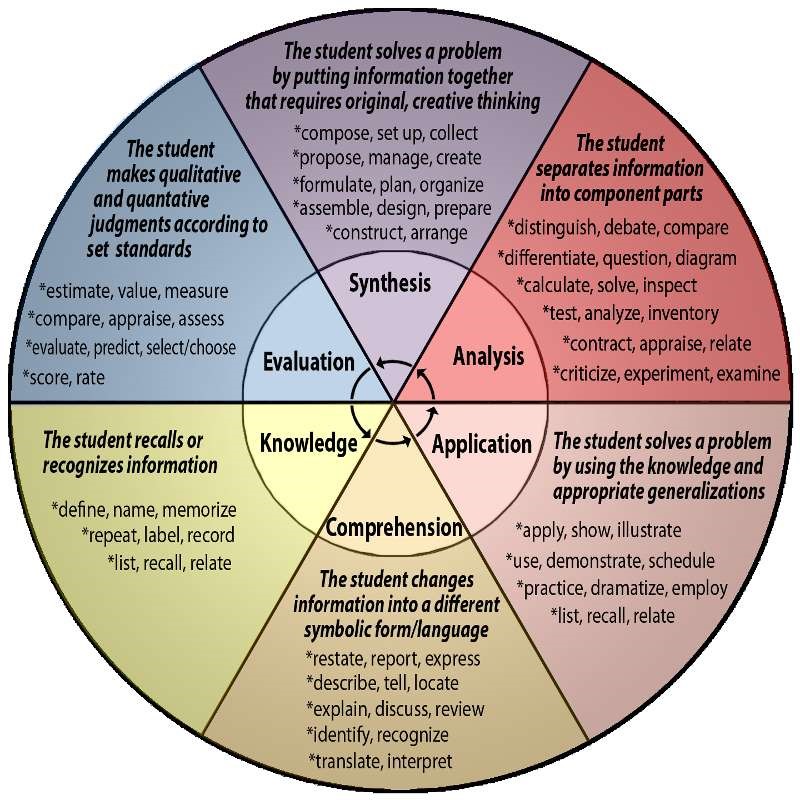Essay #3: Analysis of Bloom, Pressfield, and Sawyer:
The Surprising Path to Creativity
Length: About 1,500 words
Rough Draft Due in class and via Canvas: 5/18
Final Draft Due via Canvas: 5/23
102J Main Page | Syllabus | Essay #1 | #2 | #3 | #4
10 Steps to Responding to the Bloomian Analysis
So far this quarter we have explored and presented our identities as creative professionals with the multimodal autobiography assignment, and reviewed the work of peers or experts in our fields with the performance review assignment. Our third essay requires that we use a framework that we have discussed in class – Bloom’s Taxonomy of Thinking Tasks – to better understand the lessons offered in Steven Pressfield’s book The War of Art and Dr. Keith Sawyer’s book Zig Zag, and to apply those lessons to our own goals as creative professionals.
Looking at the Cognitive, Affective, and Psychomotor domains (think head, heart, and hands), Benjamin Bloom invites us to imagine different thinking tasks – sometimes called learning objectives – that we engage in as our thinking becomes increasingly sophisticated.
As we have discussed in class, recent revisions to Bloom’s Taxonomy have elevated synthesis above evaluation, perhaps reflecting the challenges of writing and creating original work in the fine arts. Dr. Richard Paul, founder of The Center for Critical Thinking at Sonoma State University, has suggested that the move from knowledge and then comprehension to application represents an evolution of thinking, while the higher order thinking tasks of analysis, evaluation and synthesis might be seen as parallel in complexity and importance. Similarly, Keith Sawyer indicates in Zig Zag that the following directives or steps on what he calls a “path to creativity” are not necessarily (or even usually) sequential or hierarchical:
- Find the right question
- Prepare your mind
- Be aware
- Free your mind
- Generate ideas
- Combine ideas
- Make ideas even better
- Get your ideas into the world
Taking Sawyer’s first directive as our starting point, we are going to ask and answer Bloomian questions about four topics: Pressfield’s lessons about overcoming “resistance” and the artist’s advantages in maintaining creative momentum; Sawyer’s eight directives; Pressfield’s and Sawyer’s examples of creativity from the worlds of business, invention, and the fine arts; and our own learning objectives and practices as creative professionals. We might consider what lessons we might have learned about creativity, either taken from Bloom or Sawyer’s books, or from our own varied creative fields. We might consider what from our fine arts disciplines we would want to memorize, understand, apply, analyze, evaluate, and synthesize.
With these Bloomian concepts and ends in mind, write a reflective report which analyzes Pressfield and/or Sawyer’s books, applies their lessons to your own creative choices and goals, evaluates Pressfield’s and/or Sawyer’s conclusions, and reveals inspiration for your own future synthetic projects.
Your research and reflection question: How do works by Bloom, Pressfield, and/or Sawyer help me to understand and explain where I am on my own path towards becoming a successful creative professional?
Successful responses to this assignment will support an appropriately complex argument with specific original (that is, personal) and discovered evidence, and be purposefully organized, perhaps with titled sections. We will discuss strategies in class, but I hope that you’ll recognize ways that Pressfield, Sawyer and Bloom can help you better understand these texts as well as your own creative projects and life goals.
Learning Objectives for the Bloomian Analysis of The War of Art and Zig Zag:
- To better understand and explore ways that creative professionals think about topics in the fine arts;
- To focus attention on critical thinking and application of concepts to students’ fields of study and expression;
- To understand, evaluate and apply concepts presented in Steve Pressfield’s The War of Art and Keith Sawyer’s Zig Zag: The Surprising Path to Creativity;
- To practice higher-order thinking skills, with a focus on application and analysis;
- To conceive, present, and support a complex thesis about creativity and identity.


